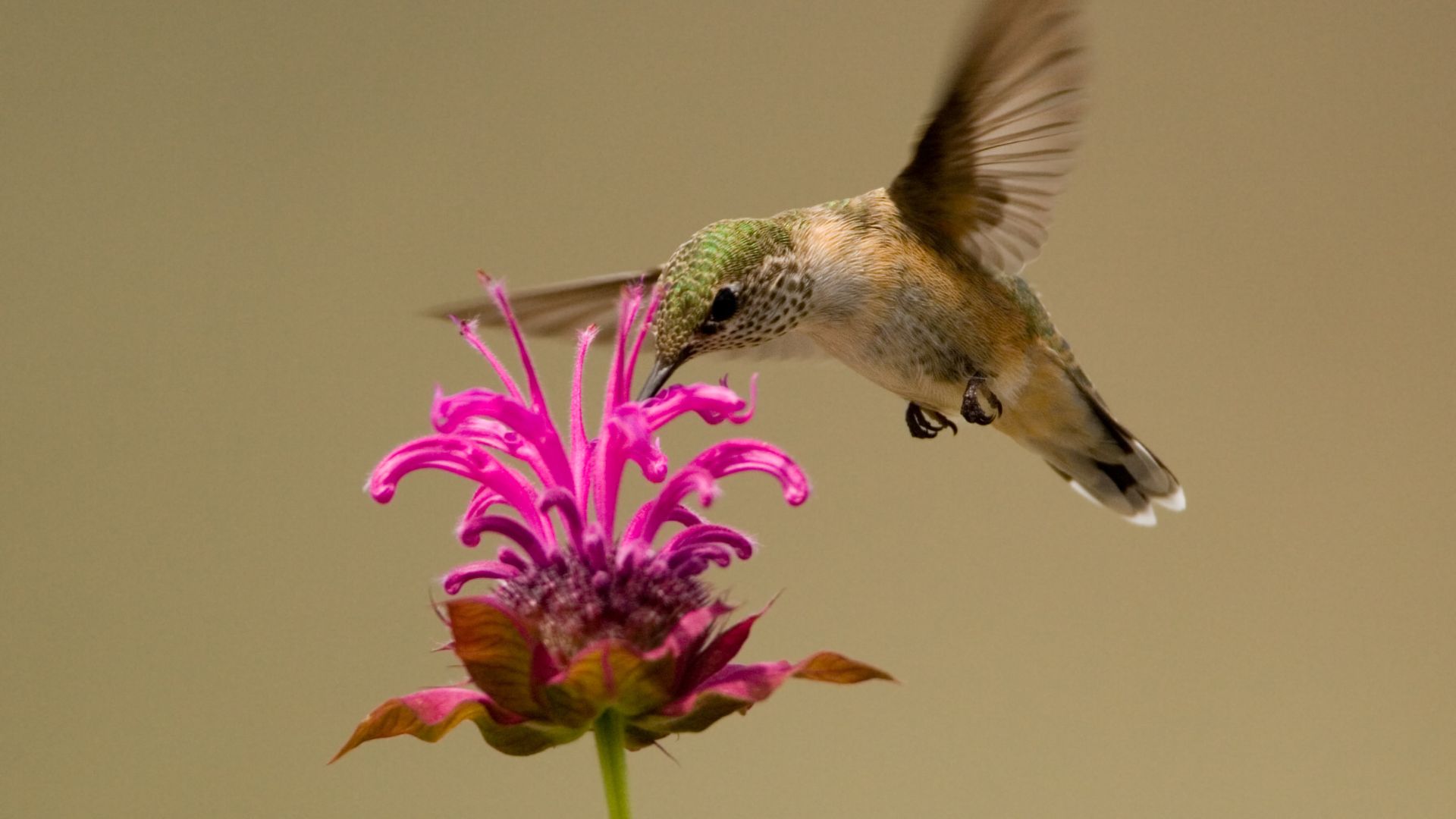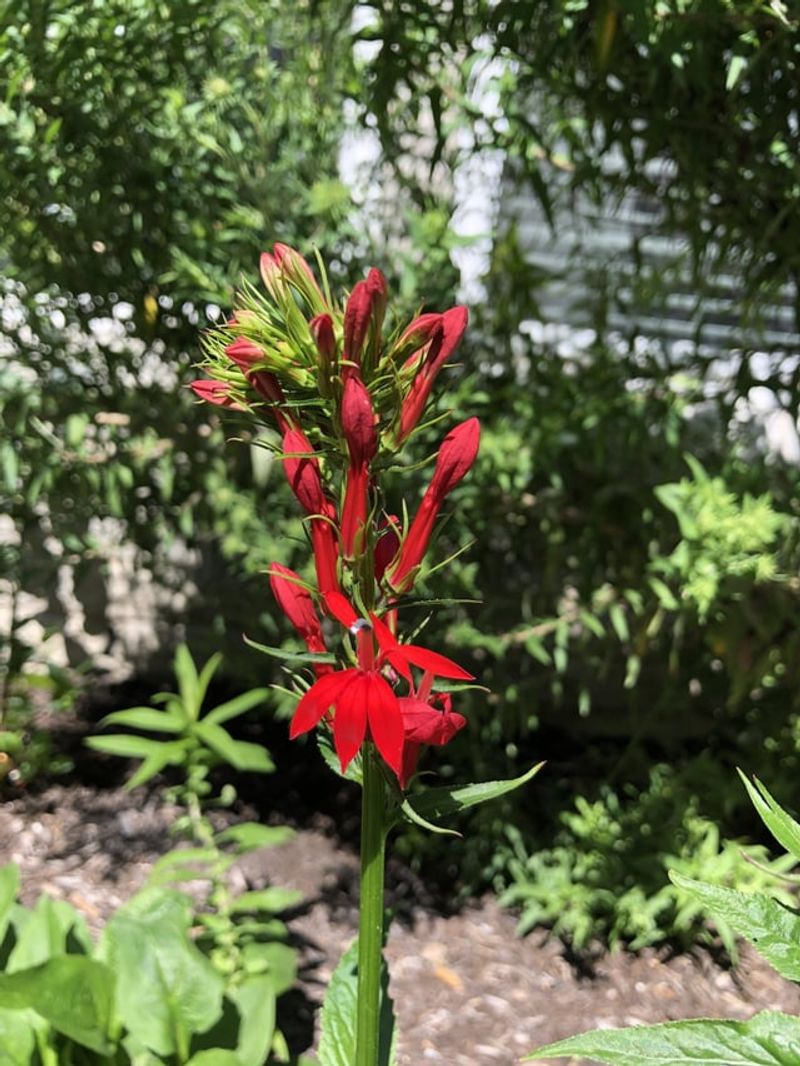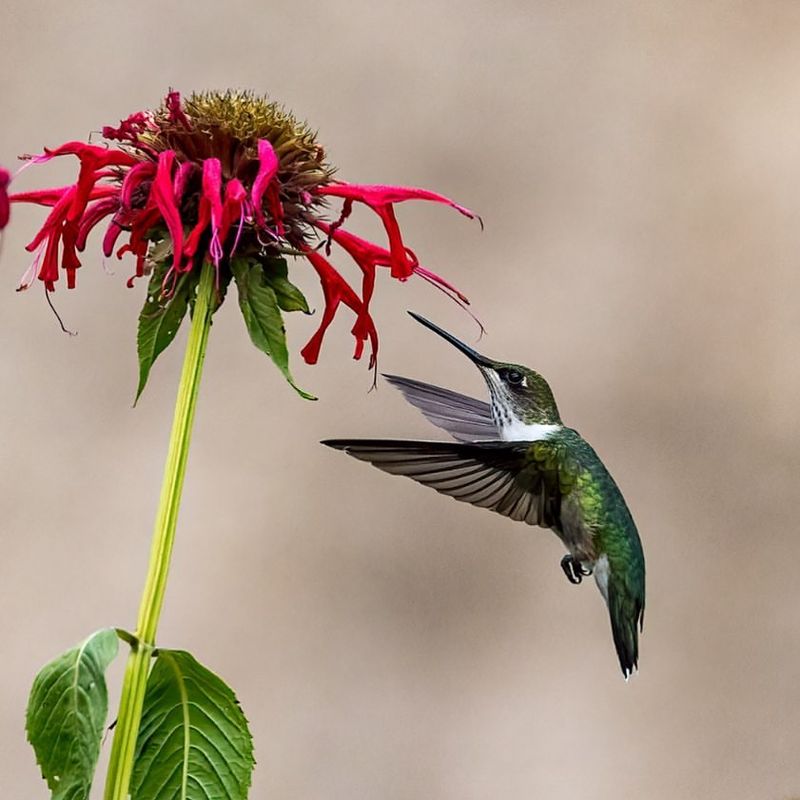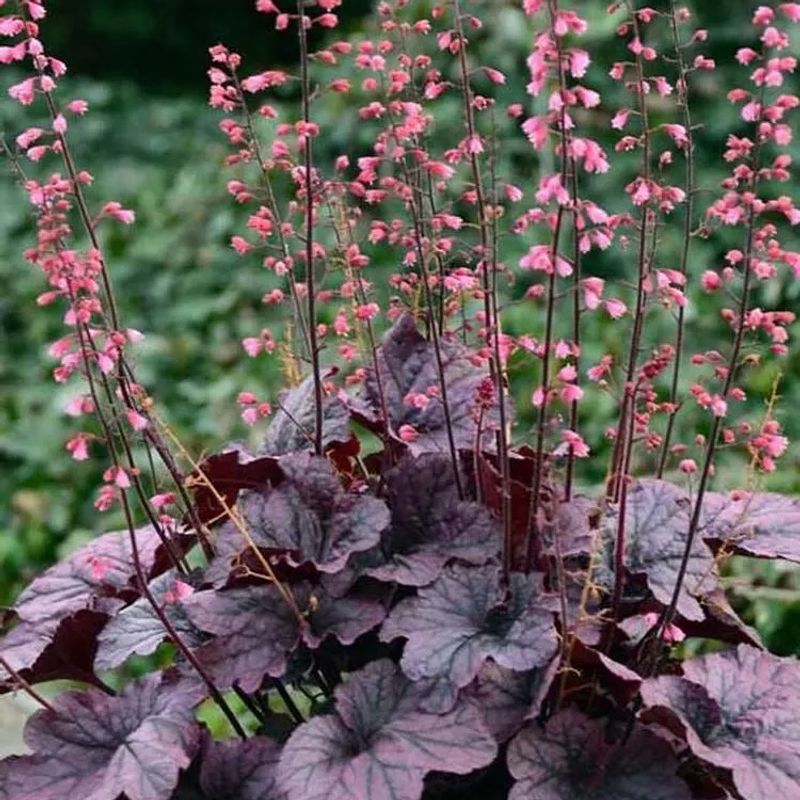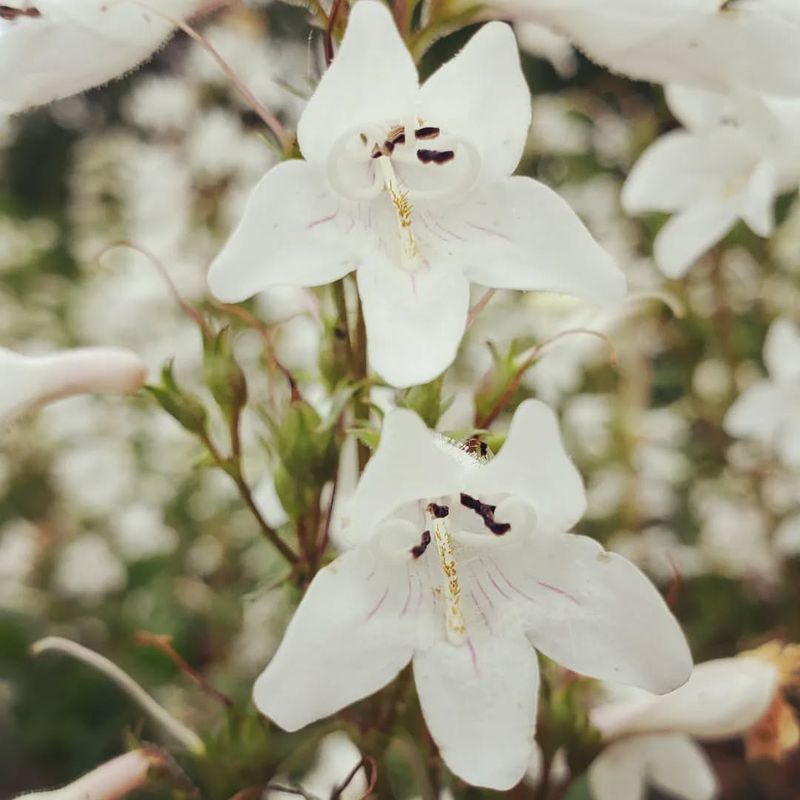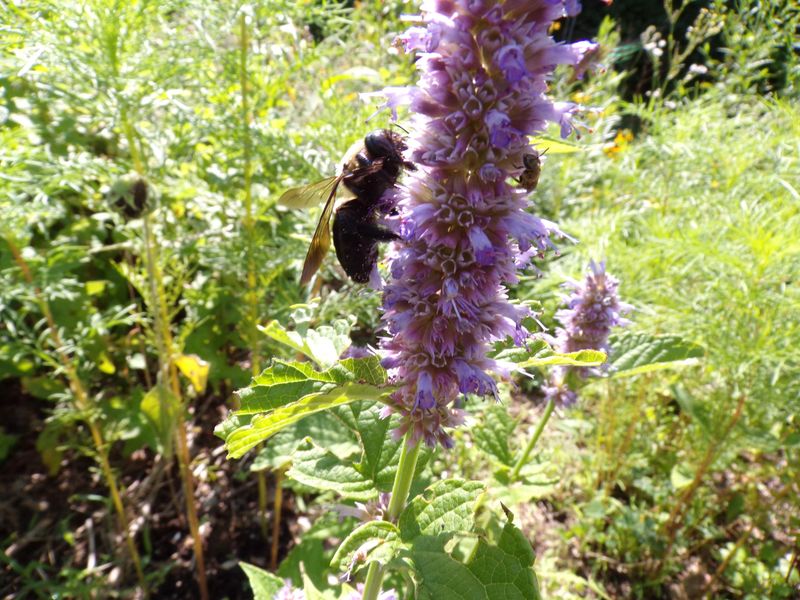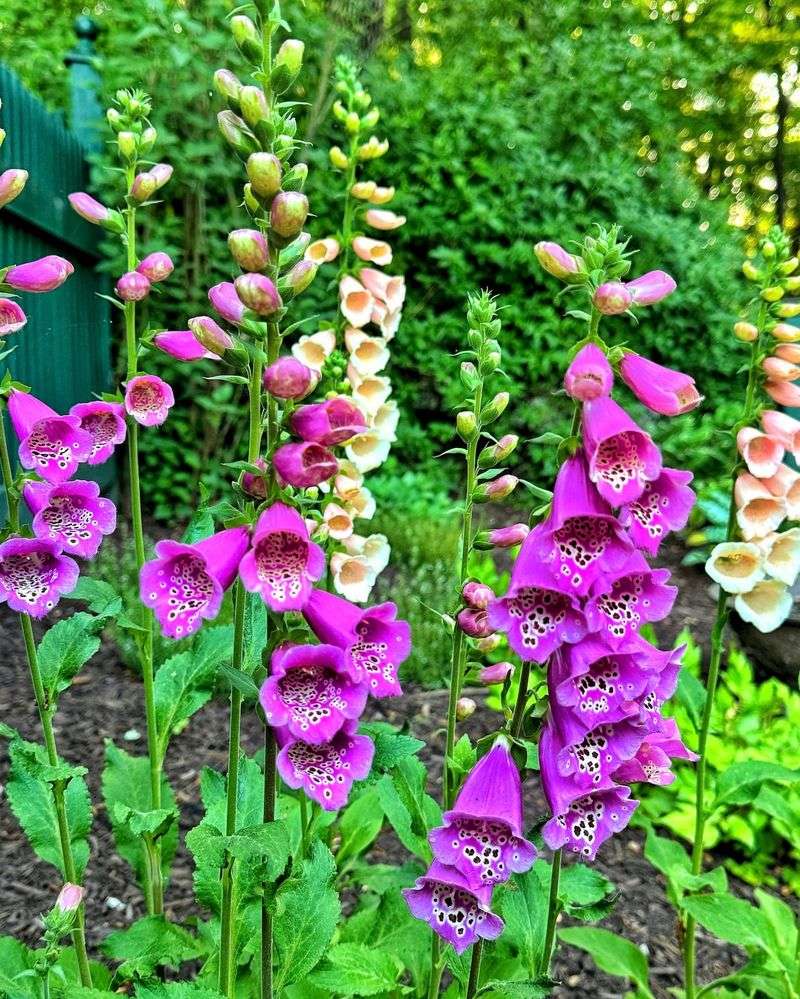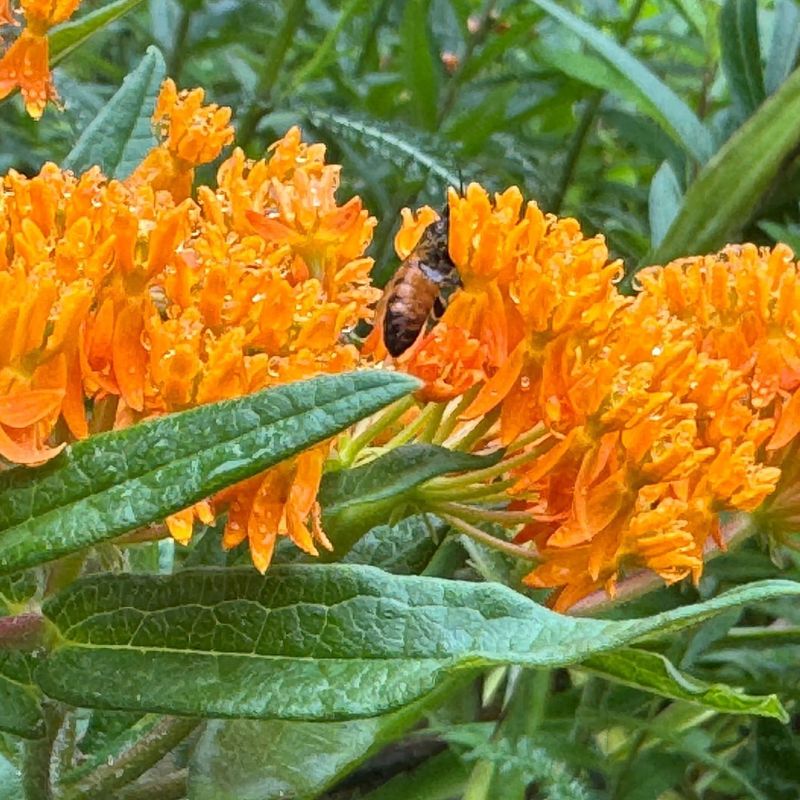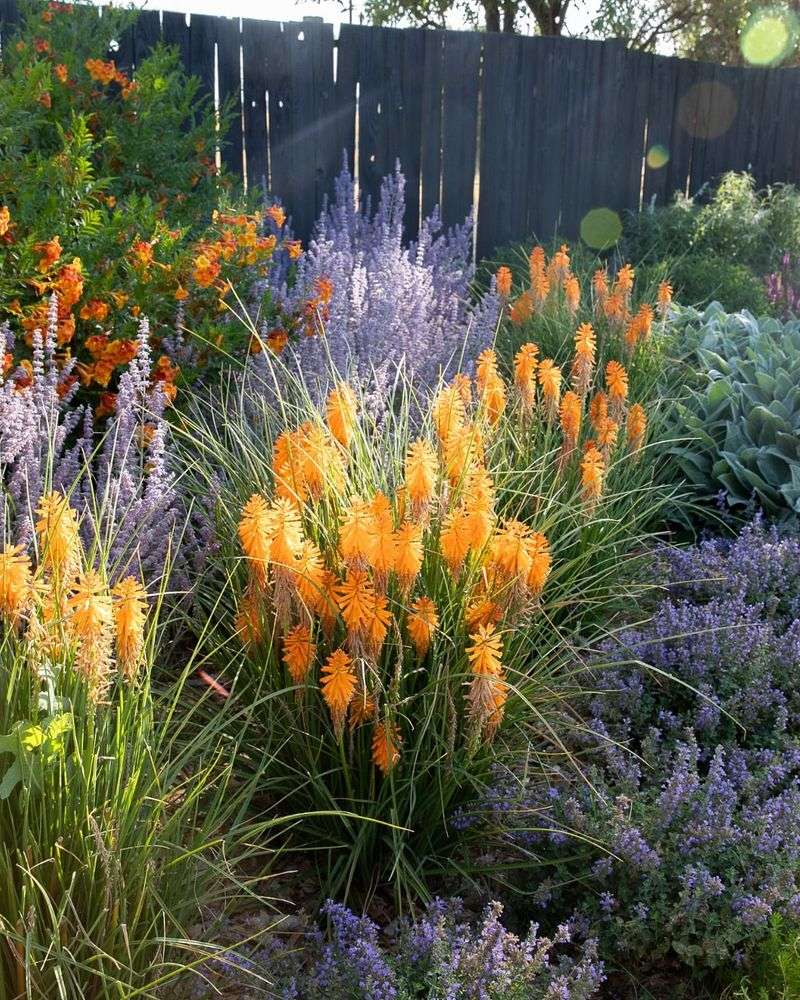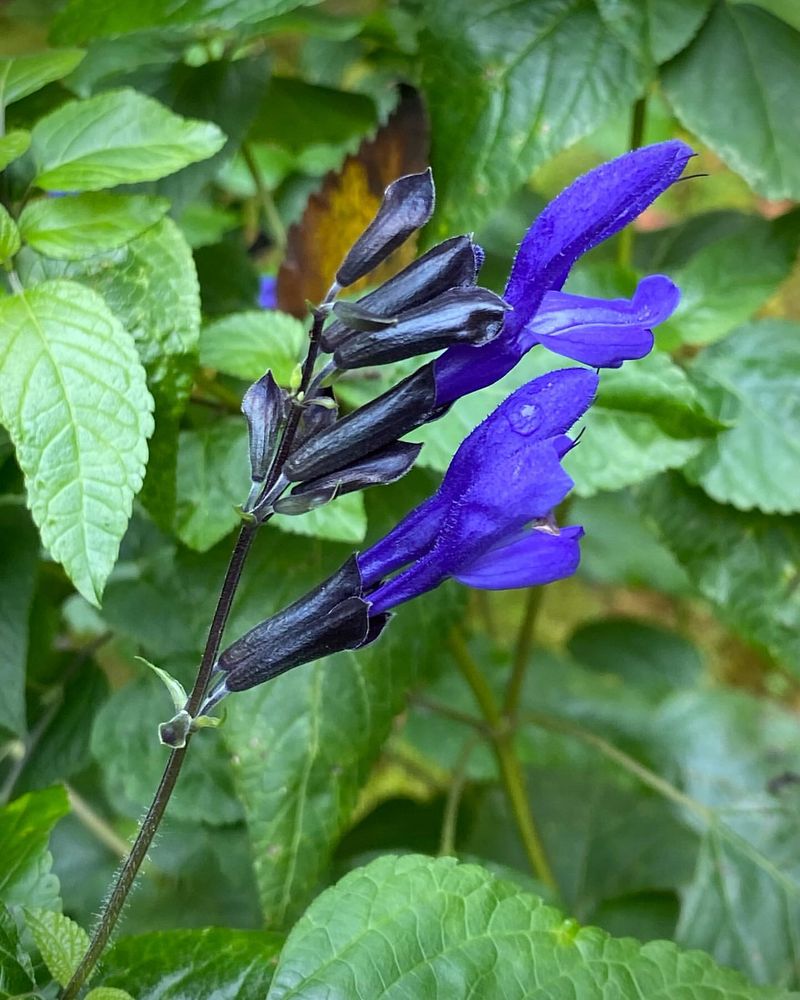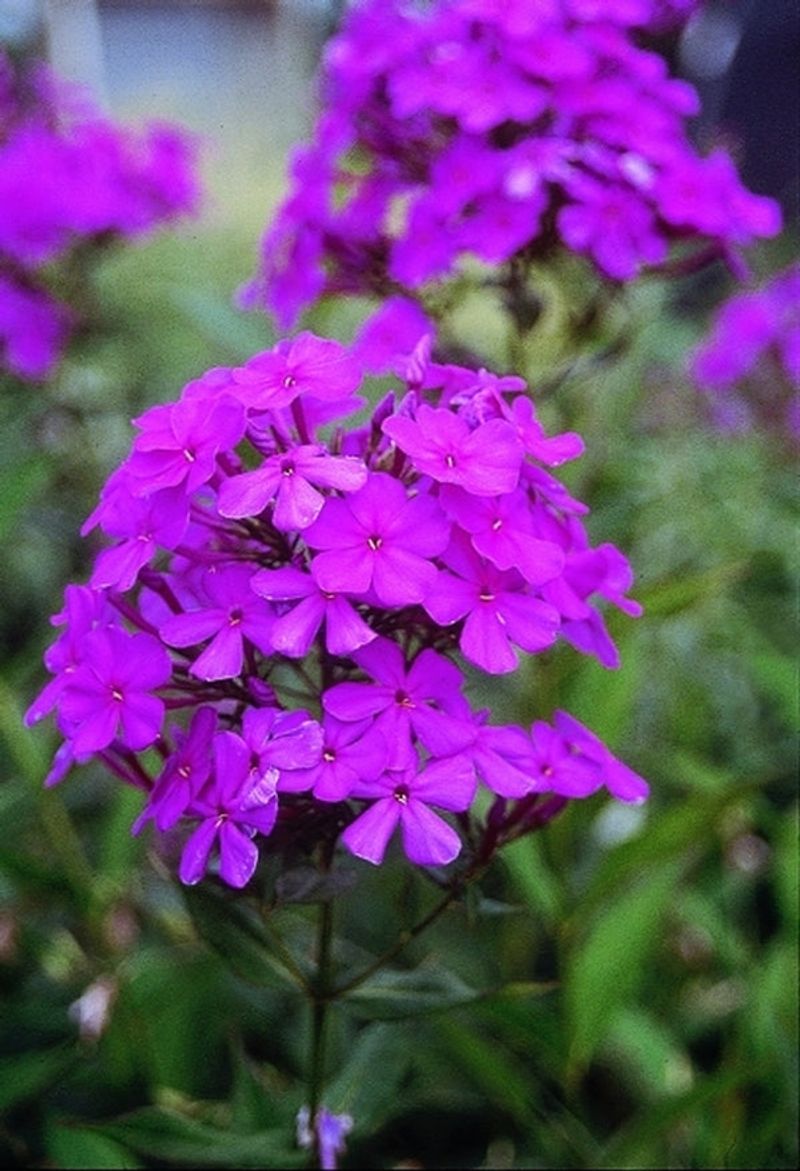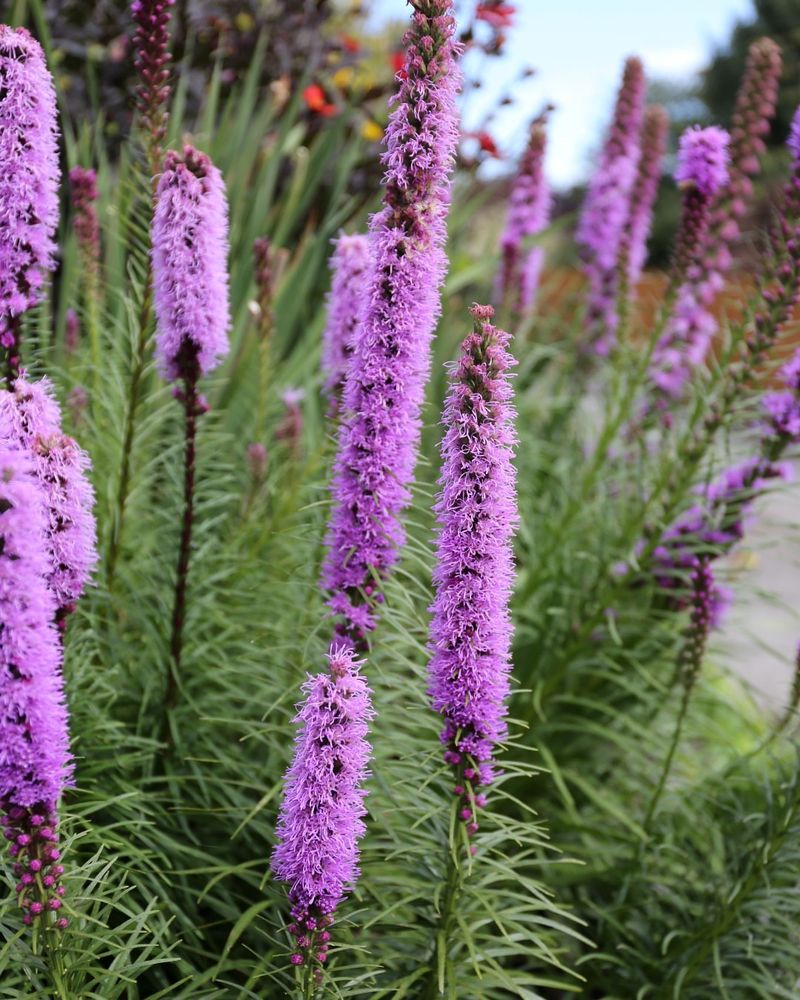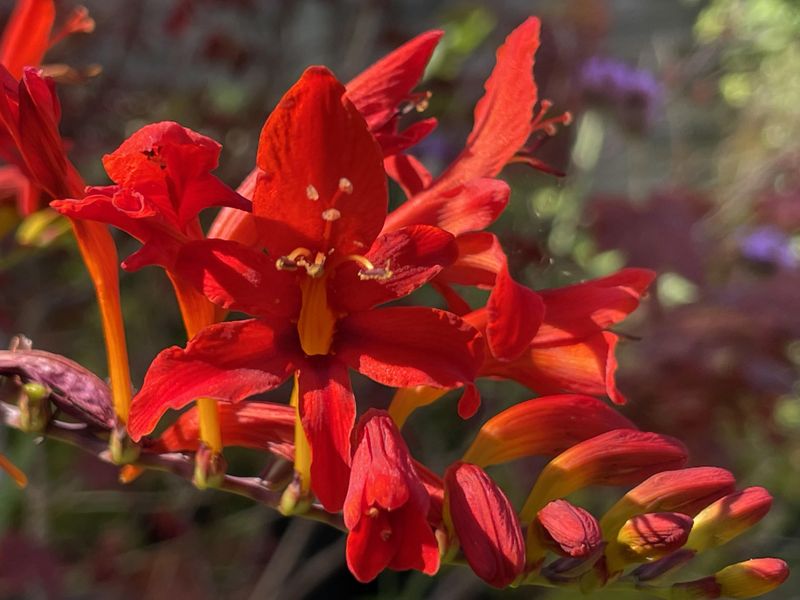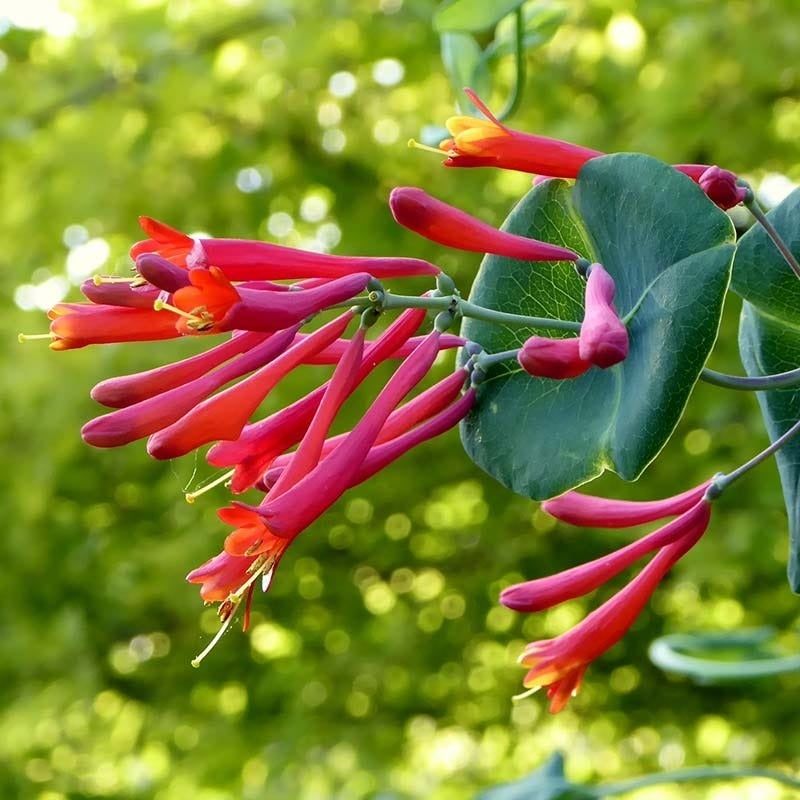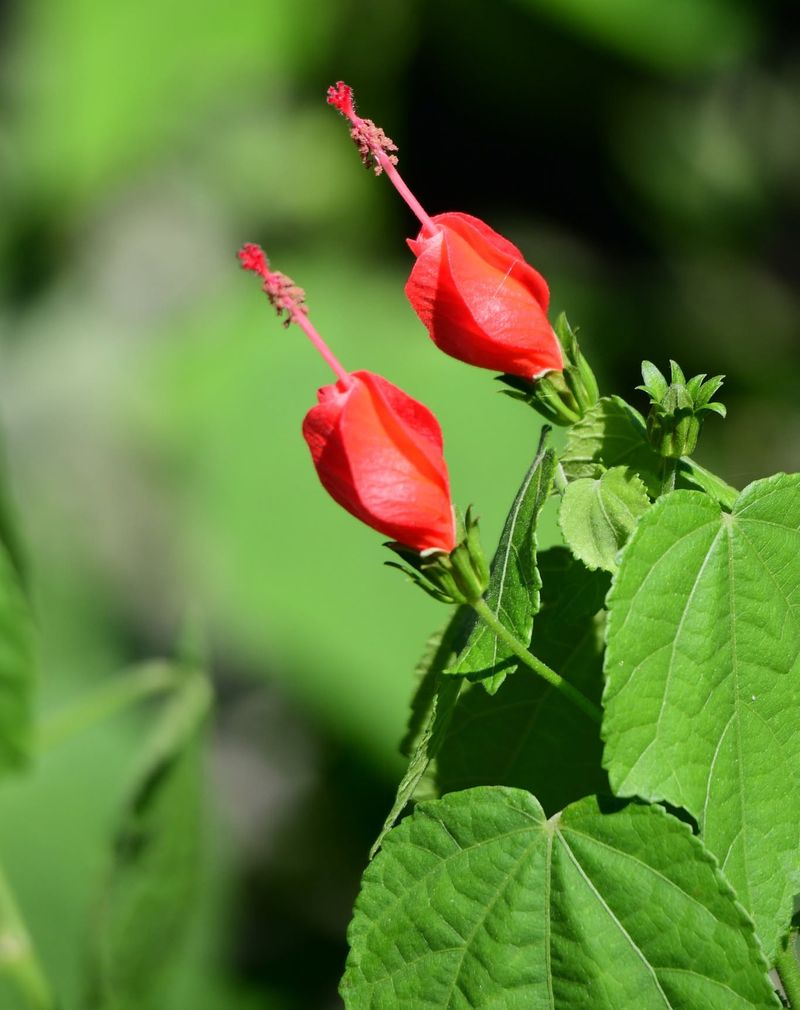North Carolina gardeners have a special opportunity to attract nature’s flying jewels with the right perennial selections. I’ve discovered 18 reliable bloomers that bring hummingbirds back to my garden year after year, creating a sustainable habitat that benefits both the birds and the local ecosystem.
The secret to a successful hummingbird garden lies in choosing flowers with tubular shapes and bright colors that signal high nectar rewards. These perennials thrive in our state’s unique climate conditions, from the coastal plains to the mountain regions, offering something for every NC gardener.
For me, the first sight of a ruby-throated hummingbird hovering near my garden feels like nature’s seal of approval. These tiny creatures remember reliable food sources and will return to your yard season after season when you plant these proven performers that handle our hot summers and varied growing conditions.
1. Cardinal Flower (Lobelia cardinalis)
The brilliant scarlet blooms of this native perennial are practically irresistible to hummingbirds. Growing naturally along stream banks throughout North Carolina, cardinal flower thrives in moist, partially shaded locations in home gardens.
The tubular flowers emerge on tall stalks in late summer when many other perennials have finished blooming. This timing makes them especially valuable for migrating hummingbirds fueling up for their journey south.
2. Bee Balm (Monarda didyma)
Sporting shaggy, crown-like blooms in shades of red, pink, and purple, bee balm creates quite a stir in the summer garden. Hummingbirds can’t resist the nectar-rich tubular flowers that make up each distinctive bloom cluster.
Native to the eastern United States, this mint family member adapts well to North Carolina’s varied growing conditions. Look for mildew-resistant varieties like ‘Jacob Cline’ that handle our humid summers without developing the powdery white coating that can affect older varieties.
3. Coral Bells (Heuchera sanguinea)
Don’t let their delicate appearance fool you – coral bells pack serious hummingbird appeal into their slender, bell-shaped blooms. The dainty flowers dangle from wiry stems held high above attractive foliage that comes in an astonishing range of colors.
What makes coral bells especially valuable in North Carolina gardens is their shade tolerance. They’ll happily bloom in spots where many sun-loving hummingbird plants struggle, bringing these fascinating birds into shadier corners of your landscape.
4. Eastern Columbine (Aquilegia canadensis)
Spring gardens come alive with the nodding red and yellow blooms of our native columbine. The unusual spurred flowers serve up nectar perfectly positioned for a hummingbird’s long bill, making this plant a favorite early-season food source.
Thriving in woodland edges across North Carolina, eastern columbine adapts beautifully to home gardens with similar conditions. Once established, it’s remarkably drought-tolerant and will self-seed gently, creating naturalized patches that return reliably year after year.
5. Penstemon (Penstemon digitalis)
Often called beardtongue for the fuzzy stamen that protrudes from each blossom, penstemon offers tubular flowers that seem custom-designed for hummingbird feeding. The white or pale lavender blooms appear on sturdy stems in late spring to early summer.
As a native perennial adapted to our region, penstemon handles North Carolina’s clay soils better than many garden plants. It’s also remarkably drought-resistant once established, making it perfect for gardeners looking to create low-maintenance hummingbird habitats.
6. Anise Hyssop (Agastache foeniculum)
Tall spikes of lavender-blue flowers make anise hyssop a standout in the summer garden. Hummingbirds share these nectar-rich blooms with numerous butterflies and bees, creating a lively pollinator paradise from June through September.
Beyond its wildlife value, this perennial offers licorice-scented foliage that deer typically avoid – a real bonus in many North Carolina gardens. The upright growth habit makes it perfect for middle or back positions in perennial borders, where it provides reliable color for months.
7. Foxglove (Digitalis purpurea)
Dramatic spires of tubular blooms make foxglove an architectural standout that hummingbirds can spot from a distance. The spotted throats of each downward-facing flower guide these tiny birds to the nectar waiting inside.
While technically a biennial, foxglove reliably self-seeds in North Carolina gardens, creating the appearance of a perennial presence. It performs beautifully in the dappled shade found under deciduous trees, bringing hummingbird activity to these often-challenging garden spots.
8. Butterfly Weed (Asclepias tuberosa)
Vibrant orange flower clusters make butterfly weed a beacon for hummingbirds from June through August. Unlike many other perennials that attract these birds, this native milkweed thrives in hot, dry conditions once established.
Perfect for sunny, well-drained spots in North Carolina gardens, butterfly weed develops a deep taproot that makes it extremely drought-tolerant. The bright flowers appear just when summer heat intensifies, providing crucial nectar during challenging weather when many other plants have stopped blooming.
9. Red Hot Poker (Kniphofia uvaria)
Looking like flaming torches rising from grassy foliage, red hot pokers create a dramatic vertical element that hummingbirds find irresistible. The tubular flowers transition from fiery red at the top to yellow at the bottom, creating a striking garden presence.
Despite their exotic appearance, these South African natives adapt surprisingly well to North Carolina’s climate. They perform best in full sun with well-drained soil and provide reliable blooms from late spring through summer, depending on the variety.
10. Trumpet Honeysuckle (Lonicera sempervirens)
Our native trumpet honeysuckle offers everything hummingbirds love – bright red tubular flowers filled with sweet nectar. Unlike its invasive Japanese cousin, this well-behaved vine makes a perfect addition to North Carolina gardens.
Semi-evergreen in most parts of the state, trumpet honeysuckle provides both nesting habitat and food for hummingbirds. Its ability to bloom in partial shade makes it especially valuable for woodland gardens where it can scramble up trees or cover fences with wildlife-friendly beauty.
11. Salvia ‘Black and Blue’ (Salvia guaranitica)
Sporting some of the truest blue flowers in the garden, this salvia creates a striking display that hummingbirds simply can’t ignore. The deep cobalt blooms emerge from nearly black calyces, creating a dramatic color combination that stands out across the garden.
Though not officially hardy throughout North Carolina, ‘Black and Blue’ salvia often returns reliably in well-drained soil with winter mulch. Its late summer to fall bloom period provides crucial nectar for hummingbirds preparing for migration, making it worth any extra winter protection needed.
12. Autumn Sage (Salvia greggii)
Blooming from spring until frost, autumn sage provides one of the longest hummingbird feeding seasons of any perennial. The bright red (or pink, purple, or white) tubular flowers appear in waves throughout the growing season, ensuring a reliable nectar source.
Native to the American Southwest, autumn sage appreciates the well-drained soils found in many North Carolina gardens. Its drought tolerance once established makes it perfect for sunny spots where water can be scarce during our hot summers.
13. Phlox ‘Robert Poore’ (Phlox paniculata)
While many garden phlox struggle with mildew in North Carolina’s humidity, ‘Robert Poore’ stands tall with clean foliage and magenta-pink flower clusters that hummingbirds adore. The sweet fragrance that attracts us to this perennial is just a bonus – it’s the nectar-rich tubular florets that bring the birds.
Blooming in mid to late summer when many spring perennials have finished, this selection provides crucial nectar during the heat of the season. It performs beautifully in average garden soil with moderate moisture, creating a reliable hummingbird feeding station year after year.
14. Blazing Star (Liatris spicata)
Rising like purple rockets from grassy foliage, blazing star creates vertical drama that catches both human and hummingbird attention. The unusual blooming pattern – from top to bottom rather than bottom to top – extends the nectar availability of each flower spike.
Native to moist meadows throughout the eastern United States, blazing star adapts well to average garden conditions across North Carolina. Its mid-summer bloom time fills the gap between spring and fall flowering perennials, providing continuous hummingbird support throughout the growing season.
15. Crocosmia ‘Lucifer’ (Crocosmia × crocosmiiflora)
Arching stems lined with fiery red tubular blooms make ‘Lucifer’ crocosmia a dramatic addition to the summer garden. The flowers face downward at the perfect angle for hovering hummingbirds to access the nectar inside each bloom.
Growing from corms that multiply over time, this perennial creates increasingly impressive displays each year in North Carolina gardens. It performs best in full sun with average moisture, though it will tolerate some afternoon shade in the hottest parts of the state.
16. Obedient Plant (Physostegia virginiana)
Named for the way individual flowers stay put when pushed to the side, obedient plant is anything but obedient in the garden – it spreads enthusiastically in favorable conditions. The pink tubular flowers appear on tall stems in late summer, creating a sea of color that hummingbirds flock to.
Native to moist areas throughout eastern North America, this perennial adapts well to average garden conditions across North Carolina. Consider planting it in containers or areas where its spreading habit won’t cause problems, ensuring years of late-season hummingbird activity.
17. Coral Honeysuckle (Lonicera sempervirens ‘Major Wheeler’)
‘Major Wheeler’ takes our native coral honeysuckle to new heights with its prolific flowering habit and compact growth. Clusters of tubular red flowers appear from spring through fall, creating one of the most reliable hummingbird feeding stations possible in North Carolina gardens.
Unlike many vines that quickly outgrow their welcome, this selection maintains a manageable size while providing maximum wildlife value. It performs beautifully on fences, trellises, or arbors in full sun to partial shade, bringing hummingbird activity right where you can easily observe it.
18. Turk’s Cap (Malvaviscus arboreus)
Unusual twisted red flowers that never fully open distinguish Turk’s cap from other hummingbird perennials. The partially furled petals create the perfect shape for hummingbird bills to access the sweet nectar inside, making this plant a favorite feeding station.
While technically root-hardy only in the warmest parts of North Carolina, Turk’s cap often returns from the roots after winter in central areas of the state. Its ability to bloom in shade makes it especially valuable for woodland gardens, bringing hummingbird activity to spots where few nectar plants thrive.

